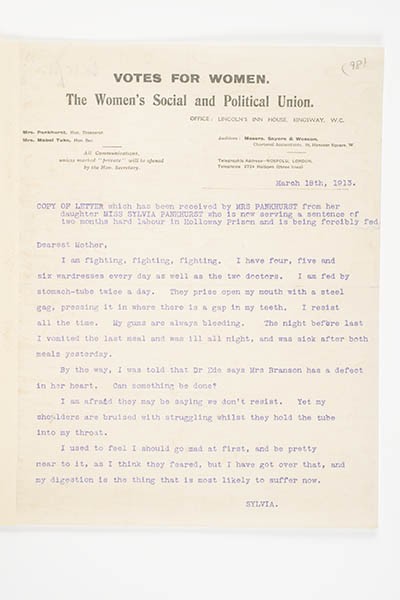What sort of messages escape through the prison bars?
This illustrated collection of letters includes the correspondence of captives and political detainees across time. Throughout history, imprisonment has been a tool of punishment, protection and oppression. In the US alone, some 2.2 million people currently sit behind bars. Many stories end with incarceration; the detective solves the crime, the court delivers a verdict, and someone disappears into a cell. But their story doesn’t end there and, in many cases, it writes itself.
From Paul the Apostle writing in his underground dungeon in Rome, to the suffragettes describing the torture of force-feeding, prison letters reveal new chapters, often lost over time. Writers in this collection include artists, activists, politicians, doctors, and criminals. They write to family, lawyers, newspapers and co-conspirators, in whatever material is available – even blood. Whether it is a friendly hello or a final farewell, these missives reveal the hidden stories of incarceration and resistance.
Coming soon, 2022.
Sylvia Pankhurst to her mother, 18 March 1913
“I am fighting, fighting, fighting”
The suffragette and anti-fascist Sylvia Pankhurst (1882 – 1960) smuggled this letter out from Holloway Prison. Pankhurst set up the Women’s Social and Political Union (WSPU) with her mother Emmeline and sister Christabel in 1903. Over the next decade, Pankhurst was arrested multiple times while campaigning for votes for women. In 1913, aged 31, she went on one of many hunger strikes; a tactic used by the suffragettes to gain public attention and protest their treatment by the authorities. As per prison policy, Pankhurst was subjected to months of force-feeding. Through a rubber tube, prison and medical staff would force mixtures of milk, eggs or other liquid “meals” into the resisting suffragettes. The same year, the government introduced the Prisoners (Temporary Discharge for Ill-Health) Act, known as the Cat and Mouse Act. Suffragettes were temporarily released from prison as they deteriorated, only to be re-interned when their health improved. Despite the dangers, the WSPU commended hunger strikers for their bravery and commitment to the cause – Sylvia Pankhurst even designed an honorary Holloway Medal, awarded to the women (and men) who endured the torture. She describes the physical and mental effects of force-feeding in the letter below, written to Emmeline and published in the Daily Mail.
Dearest Mother,
I am fighting, fighting, fighting. I have four, five and six wardresses every day as well as the two doctors. I am fed by stomach-tube twice a day. They prise open my mouth with a steel gag, pressing it in where there is a gap in my teeth. I resist all the time. My gums are always bleeding. The night before last I vomited the last meal and was ill all night, and was sick after both meals yesterday.
By the way, I was told that Dr Ede says Mrs Branson has a defect in her heart. Can something be done?
I am afraid they may be saying we don’t resist. Yet my shoulders are bruised with struggling while they hold the tube into my throat.
I used to feel I should go mad first, and be pretty near to it, as I think they feared, but I have got over that, and my digestion is the thing that is most likely to suffer now.
SYLVIA

Source: Museum of London, 1913, courtesy of Helen Pankhurst
